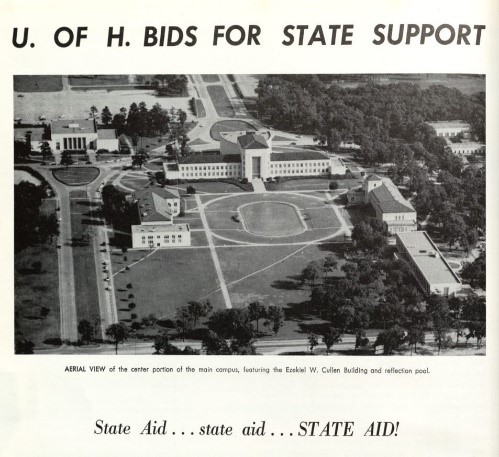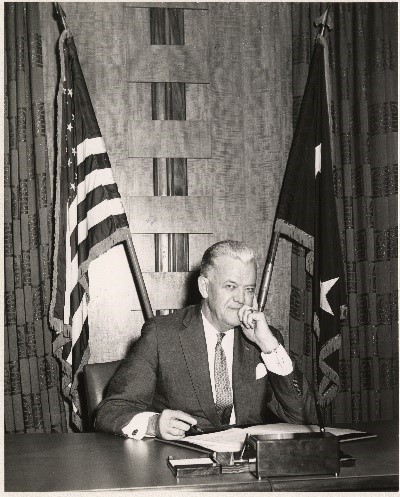By Bethany Scott

Despite its current status as one of the country’s most diverse universities, the University of Houston, like numerous institutions of higher education, was founded in an era of segregation. In the 1920s, the Houston Independent School District (HISD) board unanimously passed a resolution that authorized the founding of two junior colleges: Houston Junior College for white students and Houston Colored Junior College for Black students. At the time, Texas’s public facilities remained racially segregated, including the public high schools where the colleges met. Both colleges began operations in 1927, and enrollment quickly grew, leading them to become four-year institutions in 1934.
The University of Houston (UH) moved to its own campus in 1939, and after World War II the number of students expanded by the thousands, including many veterans on the GI Bill. By 1945, UH had grown too large for HISD to manage, and it passed control to a board of regents created by the state to administer UH and Houston College for Negroes as private institutions.

The following year, an African American man named Heman Sweatt applied to The University of Texas at Austin School of Law (UT). UT denied his admission based on his race, but the state had no law school for Black students to comply with the “separate but equal” doctrine established by the U.S. Supreme Court in Plessy v. Ferguson (1896) to address segregation. The State of Texas, hoping to avoid integrating its campuses, offered to establish the Texas State University for Negroes with a law school. In 1947, the state took over the Houston College for Negroes and founded Texas State University for Negros (TSU, now Texas Southern University) as Houston’s first public state university. TSU offered educational opportunities in “pharmacy, dentistry, arts and sciences, journalism, education, literature, law, medicine and other professional courses” – and stipulated these courses must “be equivalent to those offered at other institutions of this type supported by the State of Texas
To read the full story, click here or on Buy Magazines above to purchase a print copy or subscribe.




 Follow
Follow